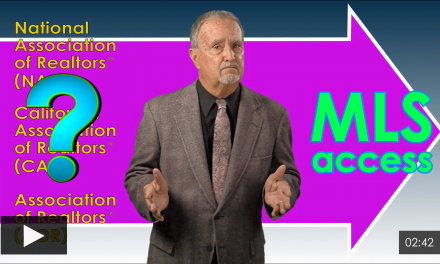This is the first episode in our new video series demonstrating vital title insurance principles and how they relate to your practice.
The title insurance series covers:
- preliminary title reports versus abstracts of title;
- title insurance as a form of indemnity insurance;
- the contents of a title insurance policy;
- exclusions and exceptions from title insurance coverage; and
- a detailed study of the California Land Title Association (CLTA) standard policy versus the American Land Title Association (ALTA) owner’s extended coverage policy.
Why this episode matters: While the majority of DRE licensees are not title professionals, chances are your clients will turn to you first when they have questions – and you need to be well-informed of title insurance mechanics.
An offer to issue a title insurance policy
A preliminary title report, also called a prelim, discloses the current vesting and encumbrances which may be reflected on the public record affecting a property’s title.
Encumbrances reflected on a preliminary title report include:
- general and special taxes;
- assessments and bonds;
- covenants, conditions and restrictions (CC&Rs);
- easements;
- rights of way;
- liens; and
- interests of others.
A preliminary title report is not a representation of the condition of title or a policy of title insurance. Likewise, a prelim cannot be relied on by anyone and imposes no liability on the title company.
A title insurer has no duty to accurately report title defects and encumbrances on the prelim, shown as exceptions in the proposed policy. [Siegel v. Fidelity National Title Insurance Company (1996) 46 CA4th 1181]
A prelim is no more than an offer to issue a title insurance policy based on the contents of the prelim. Further, the offer may be modified by the title company at any time before the policy is issued. [Calif. Insurance Code §12340.11]
The closing of purchase escrows is contingent on the buyer’s approval of items in the prelim to set the conditions of title consistent with the expectations of the buyer on entering into a purchase agreement. The buyer, their agent and escrow review the report for defects and encumbrances on title inconsistent with the terms for the seller’s delivery of title set in the purchase agreement and escrow instructions. They also look for title conditions which might interfere with any intended use or change in the use of the property contemplated by the buyer.
Escrow reliance
Escrow relies in part on items approved and disapproved in the prelim to carry out its instructions to record grant deeds, trust deeds, leaseholds, or options which are to be insured.
Typically, escrow instructions call for closing when the deed can be recorded and insured, subject only to taxes, CC&Rs and other encumbrances as agreed and approved in the instructions. [See RPI Form 401]
Ultimately, it is the escrow officer who, on review of the prelim, advises the seller of any need to eliminate defects or encumbrances on title which interfere with closing as instructed.
The prelim, and a last-minute date-down search of title conditions, are used by escrow and the title insurer to reveal any title problems to be eliminated before closing and, as instructed, obtain title insurance for the documents when recorded.
The title insurer’s date-down confirmation of the prelim prior to closing may turn up title defects or encumbrances not included in the prelim. These occur by error on the part of the insurer or by a recording after the preparation of the prelim. In any case, the title company may withdraw its offer under the prelim.
The title company then issues a new prelim, offering to issue a policy on different terms.
The preliminary title report, Pt II
Title companies have long been aware of the public’s reliance on their prelims.
This reliance was so imbedded in real estate transactions that the California courts consistently held title companies liable for their erroneous reports. However, legislation drafted by the title insurance industry was enacted in 1981 to eliminate title insurer liability for their preparation of faulty prelims.
Preliminary title reports were once compared to abstracts of title.
An abstract of title is an accurate, factual representation of title to the property being acquired, encumbered or leased. Thus, an abstract of title may be relied on by those who order them as an absolute representation of the conditions of title. [Ins C §12340.10]
Essentially, an abstract of title is a statement of facts collected from the public records.
An abstract is not an insurance policy with a dollar limit on the insurer’s liability as is set in a policy of title insurance. The content of an abstract is intended by the insurance company to be relied upon as fact. Thus, the insurer is liable for all money losses of the policy holder flowing from a failure to accurately state all conditions of title in the abstract they issue. [1119 Delaware v. Continental Land Title Company (1993) 16 CA4th 992]
Editor’s note – The next episode in this series covers the terms of coverage in a title insurance policy which set forth the extent of the title insurance company’s obligation, if any, to indemnify the policy holder for money losses caused by an encumbrance on title.














